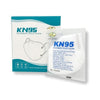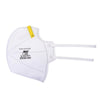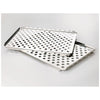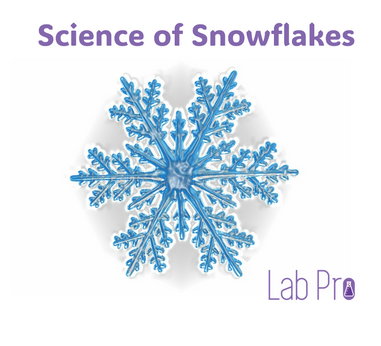- No products in the cart.
There are various areas of scientific study that help us understand the world around us. Some of the main fields include chemistry, physics, earth science, astronomy, and biology. Biology is such a unique field because it starts with the smallest unit of life and covers an entire ecosystem.
Those who are educators in the field know that having access to a lab is the most effective method of demonstrating and understanding the principles that fall under the scientific study of biology. When setting up a biology lab, it’s important to know the lab supplies needed for a biology classroom, the characteristics of an ideal biology lab, and the safety procedures and best storage practices that should be followed.
What is biology?
Biology is the scientific study of life which includes everything that once was and everything that is alive today. It covers a very broad field since there is such a wide variety of living things in our world such as animals, plants, and microorganisms. This study of life entails the origin, structure, growth, function, and evolution of all living organisms. This is a very important field of study because it helps us understand how living things work, function, and interact.

Even though biology covers a broad scope of study, there are certain principles that tie everything together. All living things are made of cells, all living things have DNA, all living things are equipped to survive in their environment, and all living things evolve to adapt traits that better help them survive in their environment.
What lab supplies do you need for a biology class lab?
Labs are used to perform experiments, research, analyses, and studies to better understand the important role that biology plays in our world. In order to carry out these procedures, a biology lab will need some specialized equipment and some general lab supplies.
The following is a list of lab supplies needed for a biology classroom:
- Stethoscopes
- Microscopes
- Prepared microscope slides
- Glass microscope slides
- PPE Apparel - Personal Protective Equipment
- Beakers
- Seeds for planting such as grass, sunflower seeds, dried lima beans, dried pinto beans, radishes, and popcorn
- Potting soil
- Grow light
- Sand
- Good posters of body systems
- Plastic flowers with details for pollination studies
- Seashells
- Feathers
- Local seeds
- Small animal tanks
- Plastic animals of all sizes for studies of adaptation
- Dissection trays
- Scalpels
- Magnifying glasses
What are the characteristics of a good biology laboratory?
There are certain characteristics that a biology lab should possess to make it an effective and efficient area to carry out all of its intended functions.
These characteristics include the following:
- It should be spacious and have windows to allow for plenty of ventilation and light
- It should include storage and shelves for models, equipment, chemicals, and specimens
- It should include working benches to use as seating during lab experiments
- It must have an emergency door to escape the lab in case of an accident that would require an evacuation of the area
- It should have a prep room or area for preparing specimens and chemicals to be used during the experiment
- It must have an easily accessible supply of gas, water, and electricity for conducting experiments
In general, the lab should have efficient space for movement, sound safety precautions, secure lab storage, and be well-equipped and organized.
Practicing safety in a biology lab: What safety equipment should be used in a biology lab?
Above everything else, it's important to practice safety in a biology lab. There are certain safety procedures to follow and safety equipment that should be used in the lab.
The following are safety procedures to follow while working in the lab:
- Always ask permission from the teacher before entering the lab
- Never eat or drink in a lab
- Don’t run or play in the lab
- Don’t handle equipment, chemicals, or specimens without permission from the teacher
- Don’t smell gasses or chemicals directly in the lab
- Don’t point an open-ended test tube at yourself or any individual when heating a solution
- Label all chemicals and specimens
- Always turn off gas and water after use
- Clean all equipment, supplies, benches, and tabletops after the experiment is completed
- Always keep flammable substances away from flames
- Return all equipment, supplies, models, specimens, and chemicals to their proper storage area
- Always wash your hands with soap and water after every experiment
The following are safety equipment that should be used in a biology lab setting to clean up spills and to prevent injury:
- Safety goggles. When there is a potential for a projectile or chemical hazard, American National Standards Institute Z87 or Z87.1 chemical splash goggles should be provided for each student.
- Sanitizer for goggles. All goggle rims and straps should be wiped down with alcohol wipes to kill bacteria after each use.
- Chemical-resistant aprons. When there is a possibility of spattering or spillage of hot water or chemicals, protective aprons should be provided to each student.
- Safety gloves. When handling plants, soil samples, animals, material that contains harmful allergens or micro-organisms, or chemicals that cause staining or skin irritation, safety gloves should be provided for protection.
- Eyewash stations. Eyewash stations should be placed within 10-15 seconds and 20-30 steps of students working in a lab. They should be low enough for elementary students to flush their eyes if a chemical or particle lands in an eye.
- Fire extinguishers. An elementary chemistry lab should be equipped with a sufficient number of ABC tri-class fire extinguishers.
- Body sprayers. Body sprayers should be foot or forearm-operated and are used to put out burning hair or clothing.
- Grand fault interrupters/outlet covers. The outlet covers prevent objects from being inserted into an outlet. The grand fault interrupter breaks the circuit in order to prevent electrocution.
- First-aid kit. First-aid kits should be easily accessible in case of an emergency.
- Safety posters. Safety posters should be displayed throughout the room.
Biology lab storage best practices
It’s important to label chemicals accurately and store them securely.
Store chemicals in a locked storage area and mark the storage area with NFPA warning symbols to show the highest rating of any chemical stored in each category. This will alert firefighters in case of an emergency.
Be sure to keep an updated inventory on file of every chemical in storage. To properly store and separate chemicals, use wooden shelves with front lips that prevent sliding. Flammables, bases, and acids should be stored in well-ventilated and separate areas.
Lab Pro offers a large variety of supplies for biology labs. For over 40 years, Lab Pro Inc. has been committed to delivering the highest quality hand tools, chemicals, lab equipment, distance learning kits, lab supplies, and cleanroom PPE apparel to medical device companies and laboratories worldwide. To learn more, visit the biggest Lab Supply showroom in California, or contact us online or at 888-452-2776.











































